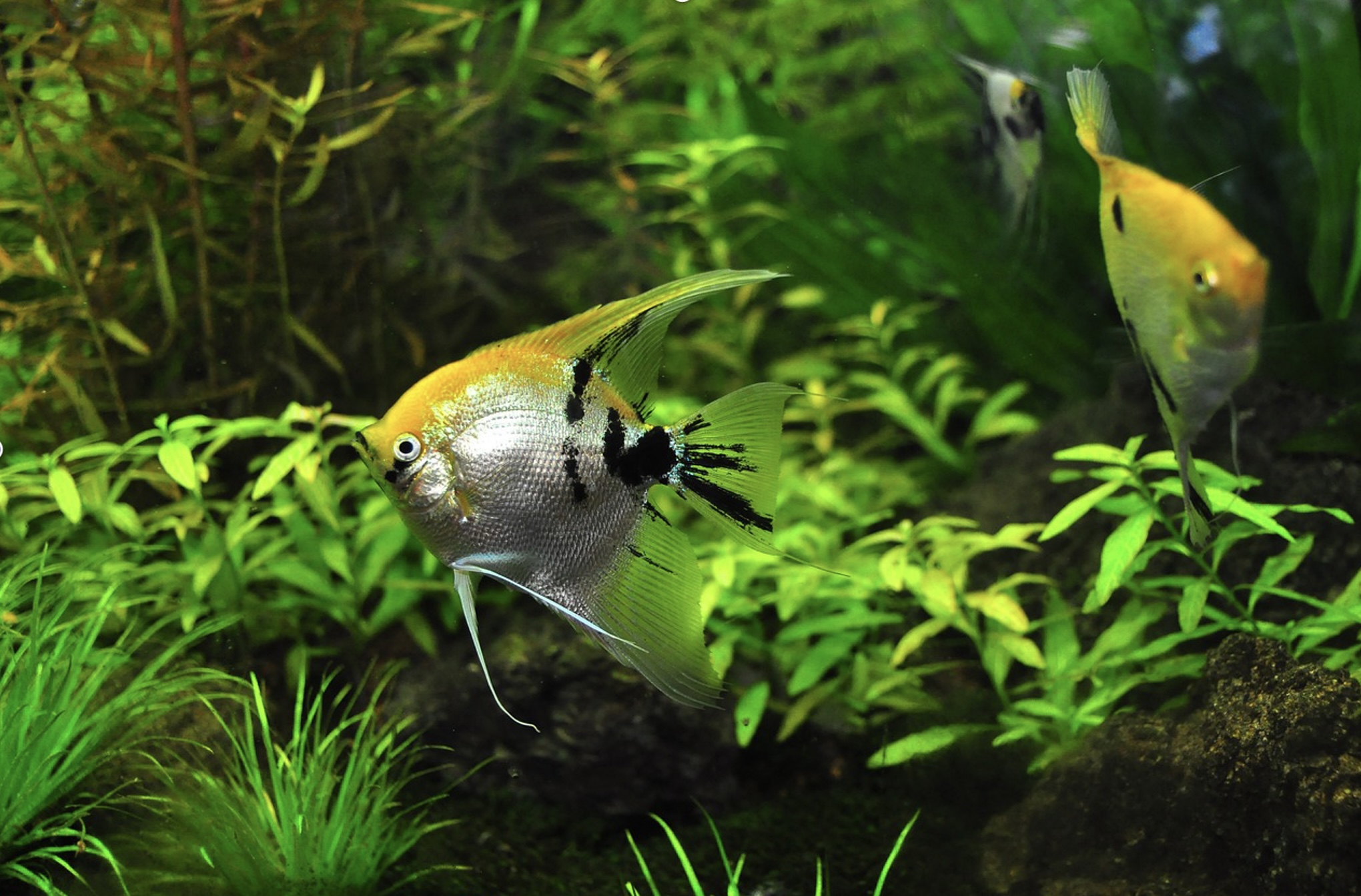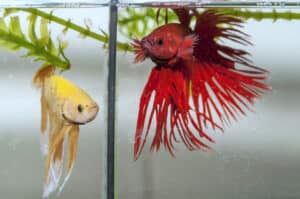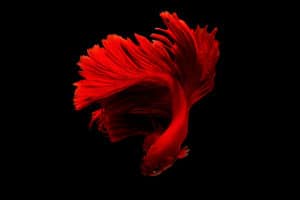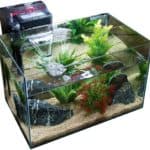A question frequently asked by those setting up an aquarium for the first time: how long does it take for tank nitrites to go down?
It is impossible to answer this question without also talking about nitrogen cycling – chances are you already heard this term; after all, it is the single most important step when setting up a new tank.
In this article, we will look at what tank nitrite is and where it comes from. Also, we will examine why it is toxic to fish. Then we discuss the nitrogen cycling timeline. Lastly, should the nitrite levels get dangerously high, we will look at the methods you can use to bring it down to safe levels.
Read on and find out how long it takes to cycle an aquarium!
What is Tank Nitrite and Where Does it Come from?
Let’s start with how nitrogen cycling begins. It all starts with ammonia. Ammonia is excreted by fish and is also released by decomposing organic waste. Despite what you’d think, the majority of ammonia excreted by fish comes from its gills, with only a little coming from its urine and feces.
Ammonia is toxic to fish, but luckily, it doesn’t stay long in the water thanks to nitrifying bacteria. These bacteria convert ammonia to a compound called nitrite.
Unfortunately, nitrite is toxic to fish too, but a different kind of bacteria comes to the rescue this time – one that converts nitrite to nitrate.
Nitrate can be tolerated by your fish, and can also act as a fertilizer for your aquarium plants. Regular water changes ensure that nitrate doesn’t build to very high levels (Yes, that is toxic too).
Why is Nitrite Toxic to Fish?
Nitrite is toxic to fish as it can be absorbed into their bloodstream. There they bind with hemoglobin to form methemoglobin.
Now, if you paid any attention in science class, you would know that hemoglobin is responsible for transporting oxygen in the bloodstream. So when enough hemoglobin gets deactivated, the fish will suffocate, even if there is ample oxygen in the water.
It is similar to how carbon monoxide can cause suffocation in humans.
Methemoglobin makes the blood of the fish brown – that is why this condition is called brown blood disease.
How Long Does it Take for Tank Nitrites to Go Down
The general consensus is that it takes about three to six weeks for nitrogen cycling to get established in a tank. That is how long it takes to cycle an aquarium.
It takes some time for the nitrifying bacteria to accumulate in the biofilter and substrate.
The nitrogen cycling timeline can of course vary when we consider the various factors involved. For instance, lower temperature means it takes longer for the bacteria to grow and multiply, which means the cycling will take longer.
Most aquarium keepers wait for the aquarium to be fully cycled before they add any fish because ammonia and nitrite can reach toxic levels during the process. The water also becomes cloudy, before clearing at the end.
Some aquarium owners also opt for “fish-in” cycling, where the fish is present in the tank during the process. This should be done only by aquarium experts who monitor the levels well and use fish that are somewhat tolerant to toxicity.
The levels of ammonia, nitrite, and nitrate fluctuate during the various stages of nitrogen cycling, as explained in the following.
Ammonia Spike
Ammonia is what kick-starts the whole cycling process. For fish-less cycling, you need to introduce an external source of ammonia, either in its chemical form or as organic waste. If you have fish in the tank, it won’t take long before they produce ammonia (2-3 days). Therefore, the ammonia level will peak in the first week.
Nitrite Spike
This stage lasts a little longer, because nitrifying bacteria grow rather slowly. Starting from the second week, the nitrite level will increase. As nitrites are formed, ammonia will start to decrease. Generally, two weeks is how long it takes for tank ammonia to go down. Meanwhile, the nitrite level will peak in the third week. It takes four or five weeks for the tank nitrites to go down.
Nitrate Accumulation
Nitrate is the end product of nitrogen cycling. It will start to appear from the third week onwards and will keep increasing steadily. Aquarium plants will absorb some nitrates as fertilizer. The only other way to remove the nitrate is by doing a water change.
How to Reduce Nitrite Levels Manually in an Aquarium
If you are doing fishless cycling, you do not have to worry about ammonia or nitrite harming your fish, as there aren’t any. If nitrogen cycling runs its course, eventually these levels will subside.
However, if you were impatient enough to introduce your fish from day one (god help them!) you need to make sure ammonia or nitrite won’t harm or kill your poor fish.
Use the following methods to reduce nitrite levels manually in an aquarium.
Do a Water Change
A water change can remove some of the toxic nitrites in your aquarium. Just do a partial water change – you want to reduce the nitrite levels but not eliminate it completely since it is required for the nitrogen cycling process.
Add Some Salt
Yes, this common kitchen ingredient can save your fish from the nitrites. Before you do this, make sure your fish can tolerate some degree of salinity. The chloride ions compete with the nitrite ions for absorption into the fish’s bloodstream, saving the fish from the toxic nitrites. The chloride levels should be six times the nitrite levels for this to be effective.
The best thing about this is that it doesn’t reduce the amount of tank nitrites, so nitrogen cycling can proceed unhindered.
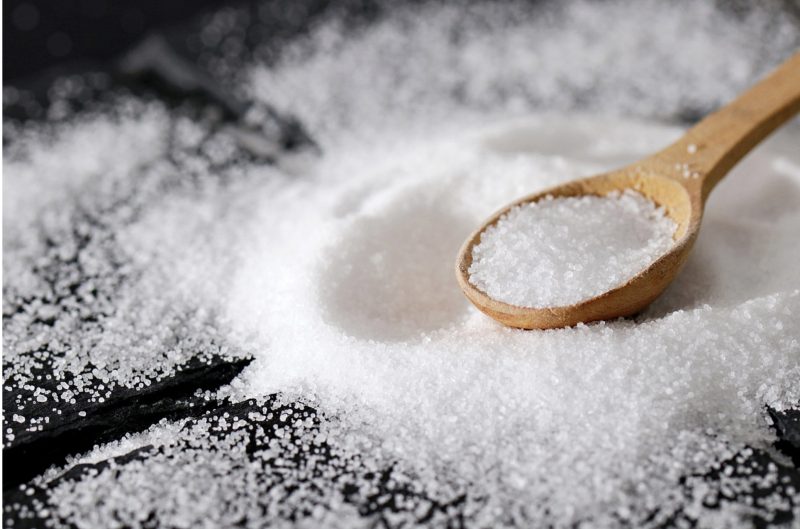
Get Rid of Organic Waste / Stop Overfeeding
As we’ve seen, organic waste can produce ammonia through decomposition. Overfeeding your fish can also introduce organic waste into the tank. Although ammonia is needed for nitrogen cycling, what is excreted by your fish is more than enough – so make sure there is little to no organic waste in your aquarium. If you control the amount of ammonia in your tank, you also control the amount of nitrites produced.
Conclusion
By now, you must have an answer to how long does it take for tank nitrites to go down. While the actual timeline may vary, it takes about 3 – 6 weeks for an aquarium to be fully cycled.
Tank nitrites will usually go down by the 4th or 5th week. If you are really impatient, you can introduce your fish at this point, although we recommend that you wait for the whole 6 weeks just to be safe. If you monitor the ammonia and nitrite levels regularly, you can more confidently add your fish.
If you are doing “fish-in” cycling, make sure the levels of ammonia and nitrite don’t get too high – employ the methods explained above to manually reduce the levels.
Once you have successfully cycled your aquarium, you can let out a huge sigh of relief – you have surpassed one of the first and biggest challenges faced by aquarium owners. Thanks for reading!
Source
https://users.cs.duke.edu/~narten/faq/cycling.html
Why is an understanding of the nitrogen cycle important when setting up a fish aquarium?
5.3. Safe Nitrite Levels

